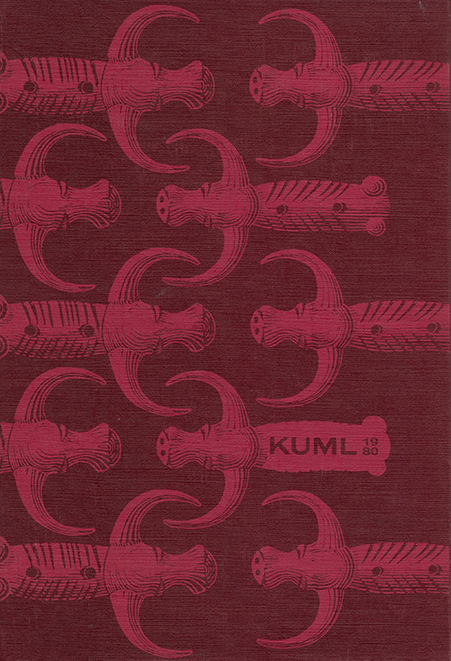Romdrup. A Stone-Age grave re-used in the Iron Age
DOI:
https://doi.org/10.7146/kuml.v29i29.107191Keywords:
Romdrup, stone age, grave, reused, north jutlandAbstract
Romdrup. A Stone Age grave re-used m the Iron Age
The re-use of grave structures is known from several periods of prehistory. In Stone Age research, distinction is made among primary burials, secondary burials, and secondary graves. A primary burial is carried out during or immediately after the erection of a grave chamber or stone cist by the society which erected the structure and within the burial tradition for which these were intended. A secondary burial is a later burial within the grave chamber or stone cist itself, where the old grave structure is broken and re-used in observance of a new burial custom. A secondary grave resembles a secondary burial but is carried out in the barrow, not in the burial chamber, possibly after enlargement of the barrow.
The most extensive secondary burials in Stone Age graves were carried out in the late Neolithic period, when old dolmens, and passage graves were to a very large extent used for new burials. However, the majority of secondary graves are from the late Bronze Age, when burial of cremated corpses in ancient barrows was the predominant custom.
During the Iron Age as well, ancient Stone Age graves were used as burial places. The most numerous examples are the secondary graves from the early Iron Age. These are known from the Single Grave barrows, from barrows erected around megalith graves, and from late Neolithic stone cists. However, it is rare that secondary burials as such were made in Stone Age graves during the Iron Age.
The best example of this custom comes from Romdrup, about 10 km southeast of Ålborg. Here, in 1895, a so-called stone cist with an entrance from the Single Grave period was investigated. No barrow was seen at the site and the lintels had long since disappeared from the cist. The cist was oriented NNW/SSE and measured about 6.75 m long, 1.9-2.5 m wide, and 1.1 - 1.5 m high. It was set with seventeen large stones, placed with the flat side inward and sloping inward. The chamber was highest and widest at the north end. At the south were two upright stones flanking a low threshold stone. On and by the bottom of the chamber finds were made of a flint dagger of type VB from SN C, a bowl and a handled vessel from the early Roman Iron Age, the bottom part of two Iron Age vessels, and a piece of corroded iron. Uppermost in the fill of the cist were the sherds of several clay vessels. The stone cist had probably been erected in the late Single Grave period, after which it was re-used in the late Neolithic and the Roman Iron Age.
The find is not unique. In a stone cist of the same type on Skroghede, west Himmerland, besides a straight-walled EGK beaker finds were also made of a single-edged sword, a shield buckle, a handled vessel, and a number of clay vessel sherds, all from the Iron Age. In a stone cist from Låstrup, west Himmerland, finds were made of an EGK battle-axe, an amber bead, and about fifteen clay vessels from the Roman Iron Age. A find of clay vessel sherds in a ruined megalithic grave at Andrup, Vesterhan district, possibly also represents a similar secondary burial from the Roman Iron Age, while a number of other finds should most likely be interpreted as secondary graves dug down through an earlier Stone Age structure.
The Iron Age secondary burials in Stone Age graves are all from northern Jutland and seem to have been carried out in the Roman Iron Age. This must be seen in the context of a local burial custom which at that very time was developing in northern Jutland. This custom was characterized by burials in cists built of large stones; not infrequently they were used for successive burials. Thus the Stone Age chambers mentioned here were reused in the same manner as the newer Iron Age stone cists.
Klaus Ebbesen
Downloads
Published
How to Cite
Issue
Section
License
Fra og med årgang 2022 er artikler udgivet i Kuml med en licens fra Creative Commons (CC BY-NC-SA 4.0).
Alle tidligere årgange af tidsskriftet er ikke udgivet med en licens fra Creative Commons.


